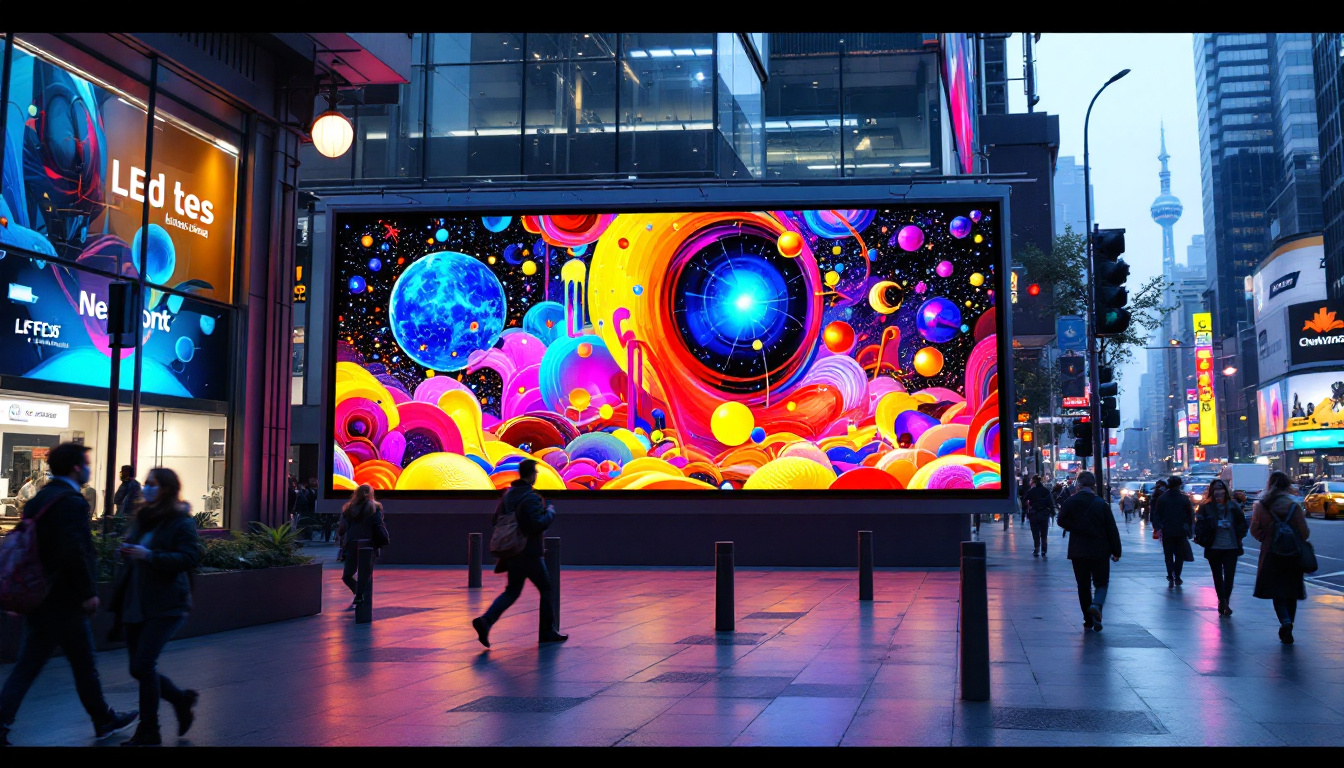In the ever-evolving world of display technology, the terms LCD and LED are often used interchangeably, leading to confusion among consumers. Understanding the differences and similarities between these technologies is crucial for anyone looking to purchase a new television, monitor, or any other display device. This article aims to clarify what LCD and LED displays are, how they work, and the advantages and disadvantages of each technology.
Understanding LCD Technology
LCD, or Liquid Crystal Display, technology has been around for several decades. It utilizes liquid crystals sandwiched between two layers of glass or plastic. When an electric current passes through the liquid crystals, they align in a way that allows light to pass through or be blocked, creating images on the screen.
How LCD Works
The fundamental principle behind LCD technology lies in its ability to manipulate light. Unlike older display technologies such as CRT (Cathode Ray Tube), LCDs do not emit their own light. Instead, they rely on a backlight, which is typically made up of fluorescent lamps. When the backlight shines through the liquid crystals, the crystals modulate the light to create the desired colors and images.
One of the notable features of LCDs is their ability to produce sharp images with high resolution. The technology has advanced significantly over the years, leading to improvements in color accuracy and response times. Modern LCDs can display vibrant colors and deep blacks, making them suitable for a variety of applications, from gaming to professional graphic design. Additionally, advancements such as LED backlighting have further enhanced the brightness and contrast of LCD screens, allowing for a more immersive viewing experience.
Advantages of LCD Displays
LCD displays come with several advantages that make them a popular choice among consumers. Firstly, they are generally more energy-efficient compared to older technologies. This means that they consume less power, which can result in lower electricity bills over time.
Additionally, LCDs are lightweight and slim, making them easy to mount on walls or fit into tight spaces. Their flat-panel design also contributes to a sleek aesthetic that many users appreciate. Furthermore, LCDs have a longer lifespan than traditional CRTs, often lasting over a decade with proper care. This durability is complemented by the fact that LCDs are less prone to screen burn-in, a common issue with other display technologies, ensuring that users can enjoy consistent performance throughout the life of the device.
Moreover, LCD technology has evolved to include features such as touch sensitivity, which has become increasingly popular in smartphones and tablets. This integration of touch capabilities allows for more interactive and user-friendly experiences. Additionally, the development of high-definition (HD) and ultra-high-definition (UHD) LCD displays has transformed how we consume media, providing crystal-clear visuals that enhance everything from movie watching to video gaming. The versatility of LCD technology continues to expand, making it a staple in both consumer electronics and professional environments.
Exploring LED Technology
LED, or Light Emitting Diode, technology is often confused with LCD, but it is important to note that LED displays are actually a type of LCD display. The key difference lies in the backlighting method. Instead of using fluorescent lamps, LED displays utilize light-emitting diodes to illuminate the screen.
How LED Displays Work
LED displays operate on the same basic principles as traditional LCDs, but with a significant enhancement in the backlighting system. There are two main types of LED backlighting: edge-lit and full-array. Edge-lit LED displays have LEDs positioned along the edges of the screen, while full-array displays have a grid of LEDs behind the entire screen. This difference can impact the overall picture quality, particularly in terms of contrast and brightness.
One of the standout features of LED technology is its ability to produce deeper blacks and brighter whites compared to traditional LCDs. This is primarily due to the precise control of light emitted by the diodes, which allows for better contrast ratios and improved color accuracy. Additionally, LED displays can achieve higher brightness levels, making them ideal for viewing in well-lit environments.
Advantages of LED Displays
LED displays offer several advantages over traditional LCDs. One of the most significant benefits is their superior energy efficiency. LED technology consumes less power than fluorescent backlighting, which not only saves energy but also reduces heat generation.
Moreover, LED displays are known for their thinner profiles, allowing for ultra-slim designs that can enhance the aesthetics of any space. They also tend to have faster response times, making them a great choice for fast-paced gaming or action movies.
In addition to their aesthetic appeal, LED displays are often more durable than their LCD counterparts. The robust nature of LED technology means that they are less prone to screen burn-in and can withstand a wider range of temperatures and environmental conditions. This durability makes them suitable for various applications, from home entertainment systems to commercial displays in retail settings. Furthermore, advancements in LED technology have led to the development of OLED (Organic LED) screens, which take the benefits of LED even further by allowing each pixel to emit its own light, resulting in even more vibrant colors and deeper blacks.
Another noteworthy aspect of LED displays is their versatility in size and application. They can be found in a wide range of products, from small screens on mobile devices to large-scale video walls used in stadiums and concerts. This adaptability has made LED technology a popular choice across different industries, including advertising, education, and healthcare, where clear visibility and high-quality images are crucial. As technology continues to evolve, we can expect even more innovative uses for LED displays, pushing the boundaries of what is possible in visual technology.
Comparing LCD and LED Displays
While both LCD and LED technologies have their merits, understanding the differences can help consumers make informed decisions. The distinction primarily lies in the backlighting method, which significantly impacts performance and visual quality.
Picture Quality
When it comes to picture quality, LED displays generally outperform traditional LCDs. The ability to achieve higher contrast ratios and more vibrant colors gives LED displays a noticeable edge. This is particularly evident in darker scenes, where LED technology can produce deeper blacks without losing detail.
However, advancements in LCD technology have led to the development of high-end models that can compete with LED displays. For instance, some LCDs now incorporate technologies such as local dimming, which enhances contrast by adjusting the backlight in specific areas of the screen.
Cost Considerations
Cost is often a significant factor for consumers when choosing between LCD and LED displays. Generally, LED displays tend to be more expensive due to their advanced technology and superior performance. However, prices have been steadily decreasing as manufacturing processes improve and competition increases.
For budget-conscious consumers, traditional LCDs may still offer a good balance of performance and affordability. They can provide satisfactory image quality for everyday use, such as watching television or browsing the internet.
The Future of Display Technology
The landscape of display technology is continually evolving, with new innovations emerging at a rapid pace. As manufacturers invest in research and development, the lines between LCD and LED technologies are becoming increasingly blurred.
Emerging Technologies
One of the most exciting developments in display technology is the rise of OLED (Organic Light Emitting Diode) displays. Unlike LCD and LED displays, OLED technology does not require a backlight, as each pixel emits its own light. This allows for even greater contrast ratios, faster response times, and more vibrant colors.
Additionally, microLED technology is gaining traction, offering the benefits of OLED while addressing some of its limitations, such as burn-in issues. MicroLED displays consist of tiny individual LEDs that can create stunning visuals with incredible detail and brightness.
Environmental Considerations
As awareness of environmental issues grows, manufacturers are increasingly focusing on sustainability in display technology. Efforts are being made to reduce energy consumption, utilize recyclable materials, and minimize waste during production. Consumers are encouraged to consider the environmental impact of their purchases, as eco-friendly options become more available.
Choosing the Right Display for Your Needs
When it comes to selecting the right display technology, it ultimately depends on individual preferences and usage scenarios. Factors such as viewing distance, lighting conditions, and intended use should all be taken into account.
For Home Entertainment
For those who enjoy watching movies or playing video games, an LED display may be the ideal choice due to its superior picture quality and contrast. The ability to achieve vibrant colors and deep blacks can significantly enhance the viewing experience. Additionally, LED displays are well-suited for bright rooms, making them versatile for various lighting conditions.
For Professional Use
In professional environments, such as graphic design or video editing, color accuracy is paramount. High-end LCDs with advanced features like local dimming and wide color gamut capabilities can provide the precision needed for detailed work. However, OLED displays are becoming increasingly popular in these fields due to their exceptional color reproduction and contrast.
Conclusion
In summary, both LCD and LED technologies have their unique advantages and applications. While LED displays offer superior picture quality and energy efficiency, traditional LCDs remain a viable option for budget-conscious consumers. As technology continues to advance, the future of displays looks promising, with exciting innovations on the horizon.
Ultimately, understanding the differences between these technologies empowers consumers to make informed decisions that align with their specific needs and preferences. Whether it’s for home entertainment, professional use, or casual viewing, the right display technology can significantly enhance the overall experience.
Discover LumenMatrix’s Advanced LED Displays
Ready to elevate your visual experience with the latest in display technology? Look no further than LumenMatrix, a pioneer in LED display innovation. Our comprehensive range of solutions, from Indoor and Outdoor LED Wall Displays to specialized options like Vehicle, Sports, and Floor LED Displays, is designed to bring your vision to life. Embrace the future of digital signage with our Custom, All-in-One, and Transparent LED Displays that promise to captivate your audience and amplify your message. Check out LumenMatrix LED Display Solutions today and transform your space with unparalleled clarity and impact.































